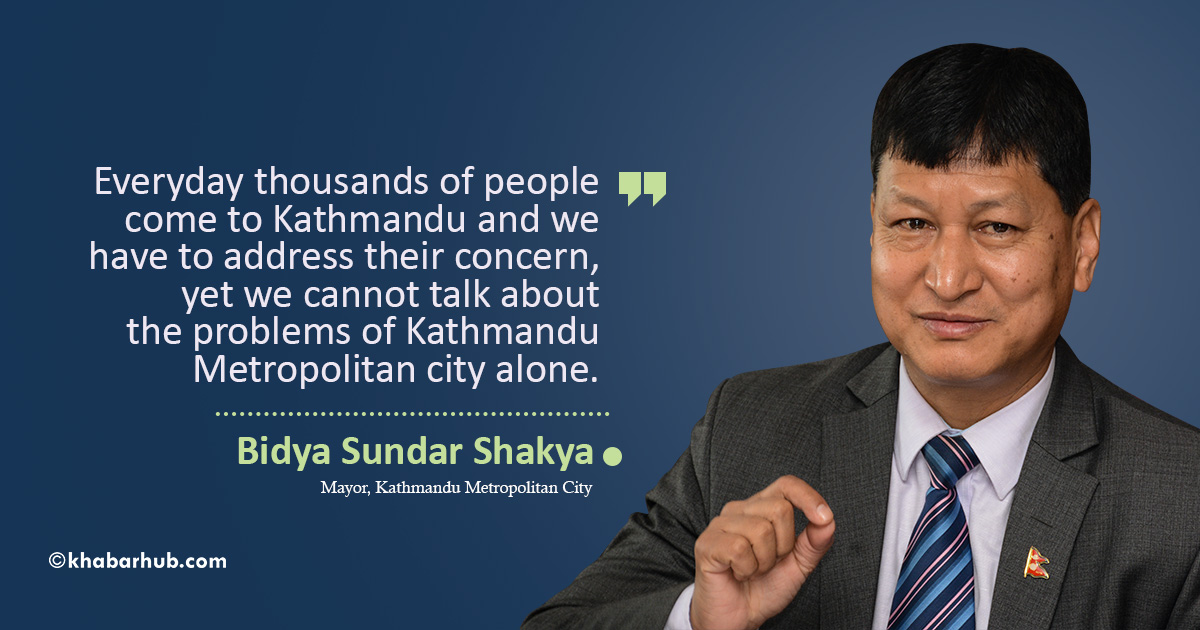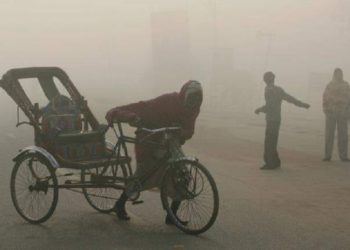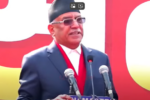Bidya Sundar Shakya, the mayor of Kathmandu Metropolitan City, is a familiar name to all the Kathmanduites. Recently, Khabarhub talked to Shakya to find about the plans and programs the Metropolitan has made for the city. Here are the excerpts of the interview:
Working as the mayor of Kathmandu Metropolitan City, what have you noticed as the main problem of Kathmandu?
We cannot compare Kathmandu with other 752 local levels. This is the capital city with people from all parts of the country.
Everyday thousands of people come to Kathmandu and the Metropolitan city has to address their concerns. We cannot talk about the problems of Kathmandu Metropolitan City. Every place has a problem, we have to explain it to them. A scholar with a doctorate degree is tempted to have another doctorate degree. The people working in social sector also feel the same.
Nothing is complete in itself. When a task is accomplished, another starts. Some tasks should be done on a daily basis, whereas some others need continuation.
Our first priority was addressing environmental issue. The environment of Kathmandu is gradually improving. Now, we have accomplished a lot in this sector. Except in the rainy seasons and during the sewage staff protest there is no problem of waste management.
Sisdol was selected for the waste management of Kathmandu valley in 2005. Although the place had been selected for temporal management, the disposal was not properly arranged.
Once the construction of the dumping site at Bancharedanda is complete, the Sisdol inhabitants won’t protest against it.
Although limited in size, Kathmandu has a huge population producing tons of waste every day. We are working for the proper and long-term management of it.
The next issue to be addressed is the renovation of the heritage leaning against the poles since 2015 earthquake. Arranging the construction materials for such reconstruction activities is challenging. Most of the intersections and alleys are very small. They should be demolished. When the old and feeble houses are pulled down, the dust coming from there is likely to block the sewage system.
Next thing demanding our attention is Melamchi Drinking Water Project. If we finish the Melamchi project on time, it will solve many issues.
We initiate the road construction project, Melamchi starts digging again. Now also, we feel Melamchi project is disturbingly following us.
Why is there no coordination in it?
We have worked hard for coordination. Under my leadership, we conducted many meetings and informal discussions as well. However, the problem is still there. I have informed the government about the trouble we are facing due to Melamchi.
For example, the construction of Gaushala-Bouddha- Jorpati road section has not completed yet. Some of its part lies under metropolis. When metropolitan tried to blacktop it, no sooner it worked in some part, they again came saying they still have to manage for pipe, once that’s addressed they may come again for sewage.
Kathmandu Metropolitan City does not lack the resources, what is lacking is merely the coordination.
How is the condition of manpower?
We don’t have the problem of manpower. We don’t have the shortage of it. Only coordination for integrated development is lacking. All levels are autonomous.
Are there any legal bottlenecks inhibiting works?
We cannot touch the drinking water sector. Provided the people here have any drinking water shortage, the metropolitan city has to request Kathmandu Upatyaka Khanepani Limited (KUKL). KUKL only distributes water.
Once the water of Melamchi comes, KUKL will distribute. There are so many agencies with different responsibilities; but the people do not know anyone else. They know their representatives, the mayor and ward chairpersons, etc.
No bureaucrat has to go to the doorstep of the people, so the people know their representatives and blame their representatives too. In case of the bureaucrat, neither should they make any commitment nor should they submit the progress report.
The complaints of water shortage come to us whereas the concerned authority is KUKL. Nepal Electricity Authority (NEA) is responsible for the management of electricity, telephone operation is regulated by another authority while the complaints are lodged at the Metropolitan City.
Now, Metropolitan City has realized that it should be managed and coordinated by the metropolis, however, we need the procedural facilitation from the concerned ministry.
Problems are galore. Kathmandu, once known as the cultural city, has turned into concrete town. Environment is getting worse. How are you tackling it?
Everyone knows it. There are problems. The city has tempted people with employment opportunities. Provided people prepare themselves to do the works, though they may not get their desired jobs, there are opportunities.
This has increased the density of population here. Core Kathmandu known as Nepal was small in the past. Kalimati, Baneshwor, Shankhamul, Samakhusi all were villages then. There were temples outside the core ‘Nepal’ then; there were temples and monasteries outside but very few houses. So, a visitor could see only the temples. Now, there are houses everywhere.The heritages are there but, other places have, in a way, shadowed them.
Metropolitan city cannot undo the past, however, we have made the plans to protect, preserve and promote the heritage and make the settlement systematic simultaneously.
Once the province headquarter is in place, decentralization of the offices located in Kathmandu can help minimize Kathmandu’s pressure, otherwise, I fear, the city may be overcrowded.
There is contradiction in the preaching and implementation of federalism. We encouraged the city dwellers to cooperate in expanding the streets, later the same place is occupied for parking. We said the metropolis cannot withstand the pressure of more vehicles, and submitted our plea to the ministry; but, the government added 1,500 more taxis in the name of distributing them to the earthquake victims.
Yet, we are working affirmatively. With the intent of replacing small vehicles with the bigger ones, the metropolis has invested in Sajha Bus. The deal related to electric bus has reached at the final phase. The province government and federal government have promised to help us.
Therefore, the problem is not of resources but of management, coordinated management, I mean.
The problem which we have not tackled is actually is the problem of sewage management, yet we are working on it. To curb the pollution, we have taken some measures: broomers are part of it. The pollution level is decreasing now. Kathmandu is gradually getting dust free. The construction materials dumped by the roadside are creating some problems. We have initiated some action against it as well. The result will be noticeable after few time. To change the look of Kathmandu, all citizens have to cooperate as well.
We have taken our grievances to the PM as well, from PM to the Melamchi officials we have complained that the metropolis is facing criticism due to long-overdue Melamchi drinking water project. We have called for help.









Comment